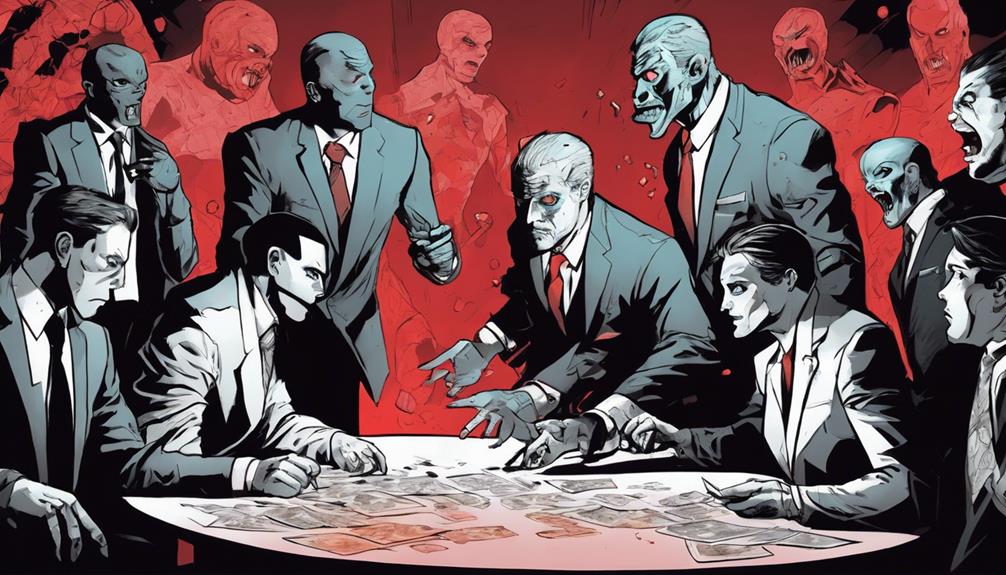Releasing Code Red lets you reshape brand narratives and take on industry giants through clever PR strategies. You'll identify a clear villain to engage audiences and embrace that 'David vs. Goliath' dynamic for maximum impact. Think of notable campaigns where smaller firms turned adversity into visibility, showcasing their agility against larger competitors. But it's essential to navigate the ethical waters to maintain brand integrity, avoiding underhanded tactics that could backfire. Timing and genuine messaging elevate your campaign's success. Ready to discover the nuances of executing a Code Red strategy that resonates? You'll find plenty more insights ahead.
Key Takeaways
- Code Red strategies leverage the underdog narrative to challenge industry giants and capture audience attention.
- Clearly identify a target and villain to create a compelling story that resonates with stakeholders.
- High stakes and strategic execution amplify media coverage and enhance campaign visibility.
- Ethical considerations are crucial; maintain integrity to avoid backlash and foster long-term brand trust.
Understanding Code Red

Understanding Code Red means recognizing its origins in military discipline, where it signifies unwritten orders that lead to extrajudicial punishment and significant corruption.
In this framework, Code Red represents a troubling culture that prioritizes loyalty over justice.
Think about the powerful scenes in 'A Few Good Men' where Tom Cruise's character confronts the moral implications of such orders. These situations reveal how silence can perpetuate evil-doing, as individuals follow unspoken rules instead of standing against wrongdoing.
By grasping this concept, you can see how Code Red embodies a critical struggle: the fight for transparency and accountability against entrenched systems.
It's crucial to acknowledge these roots before exploring its application in other fields, like public relations.
Strategic PR Applications

Recognizing the implications of Code Red in military contexts can inform how you approach strategic PR applications, where the concept evolves into a powerful tool for managing brand narratives. By understanding the significance of Code Red in military operations, strategic PR professionals can effectively utilize this concept to engage in proactive reputation management, crisis communication, and shaping public perception. By leveraging the insights gained from military strategies, strategic PR applications can unlock their full potential in guiding and controlling the narrative surrounding a brand. This approach allows for a more deliberate and calculated approach to managing public opinion and mitigating potential PR crises. Unlocking your potential in strategic PR applications means being able to anticipate and respond to challenges in a strategic and impactful manner.
You'll want to identify your target carefully; selecting a villain that audiences can rally against is essential. Avoid sympathetic figures to maintain a clear conflict.
Embrace the ‘David vs. Goliath' dynamic, as it often garners media attention and enhances your visibility. Effective Code Red strategies can elevate your brand, transforming an attack into an opportunity for recognition.
Remember, stakes must be high to justify this approach, ensuring that your campaign resonates with your audience and leaves a lasting impact on the competitive landscape.
Focus on execution and intent for success.
Notable Code Red Campaigns

Several notable Code Red campaigns have successfully leveraged the underdog narrative to challenge larger competitors and reshape brand perceptions. By positioning themselves as innovators, these brands have created compelling stories that resonate with audiences.
Here are a few standout examples:
- ON24 vs. CES: Highlighted environmental hypocrisy, making their point clear.
- Yellowbrick's Response to IBM: Turned a direct attack into an opportunity for visibility.
- Smaller Tech Firms: Regularly take on industry giants, showcasing agility and innovation.
These campaigns illustrate how a well-executed Code Red strategy can elevate a brand's image and create impactful narratives in the competitive landscape.
Navigating Ethical Considerations

When implementing a Code Red strategy, it's important to contemplate the ethical implications it may pose for your brand and its reputation.
You'll want to guarantee that your approach isn't perceived as malicious or underhanded, as that can backfire. It's vital to maintain integrity while leveling the playing field against larger competitors.
Carefully consider your messaging and the potential fallout; you don't want to alienate customers or stakeholders. Remember, transparency often wins in the long run, so be prepared to back up your claims with solid evidence.
Expert Industry Insights

Leveraging industry insights from experts like Curtis Sparrer can greatly enhance your understanding of effective PR strategies and competitive marketing trends. With his extensive experience representing major brands, you can grasp the nuances that set successful campaigns apart.
Discover how to position your brand against industry giants.
Learn to craft narratives that resonate with your target audience.
Understand the importance of timing in launching Code Red initiatives.
Gain insight into leveraging media coverage for maximum impact.
Conclusion
So, there you have it—your ticket to PR stardom in a world where chaos reigns supreme.
Forget the gentle art of persuasion; it's all about firing your marketing cannon at the competition.
As you release your Code Red strategy, just remember: the only thing better than a dazzling campaign is a rival's confused expression when you outmaneuver them.
Now go forth, brand warrior! Make headlines, stir the pot, and keep that popcorn handy for the show!









